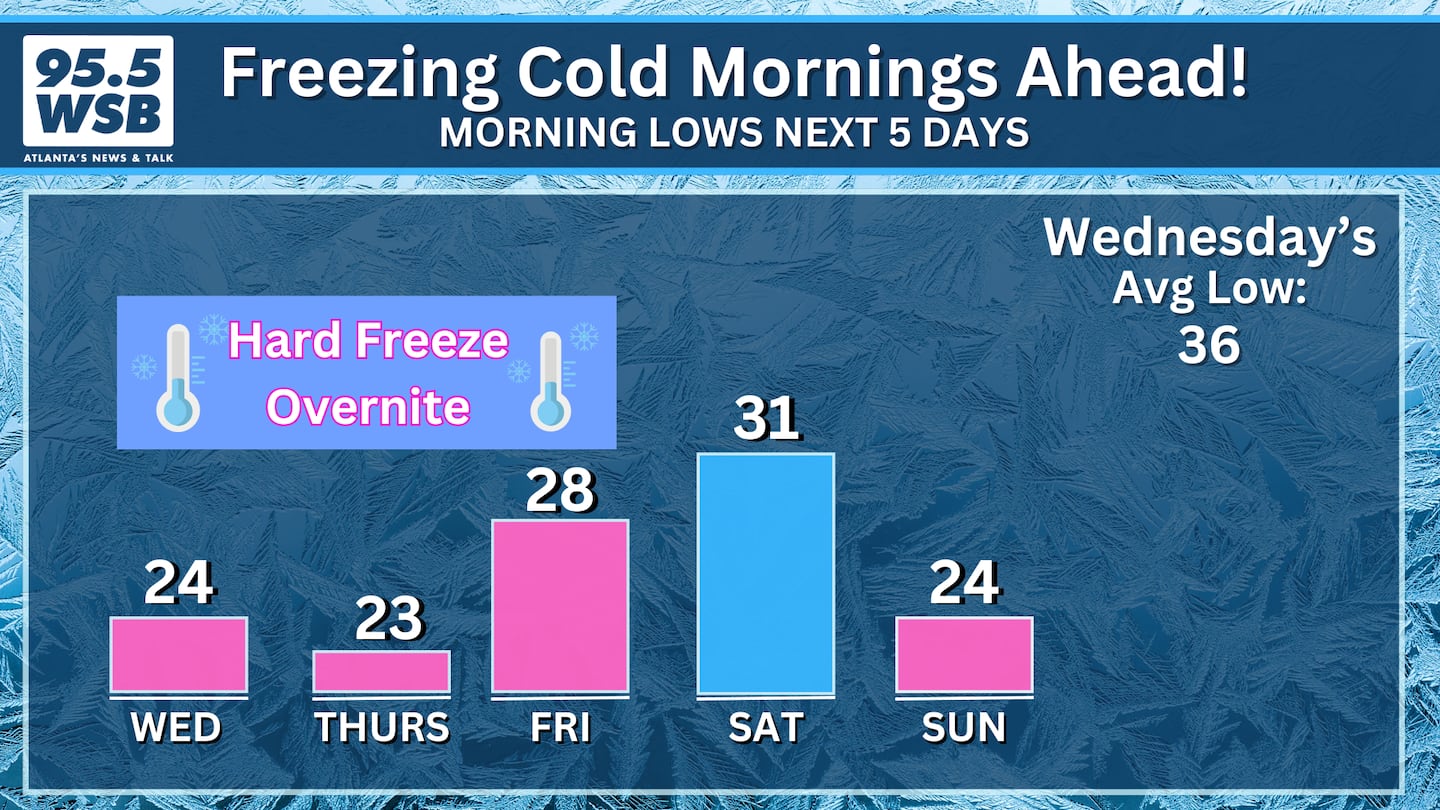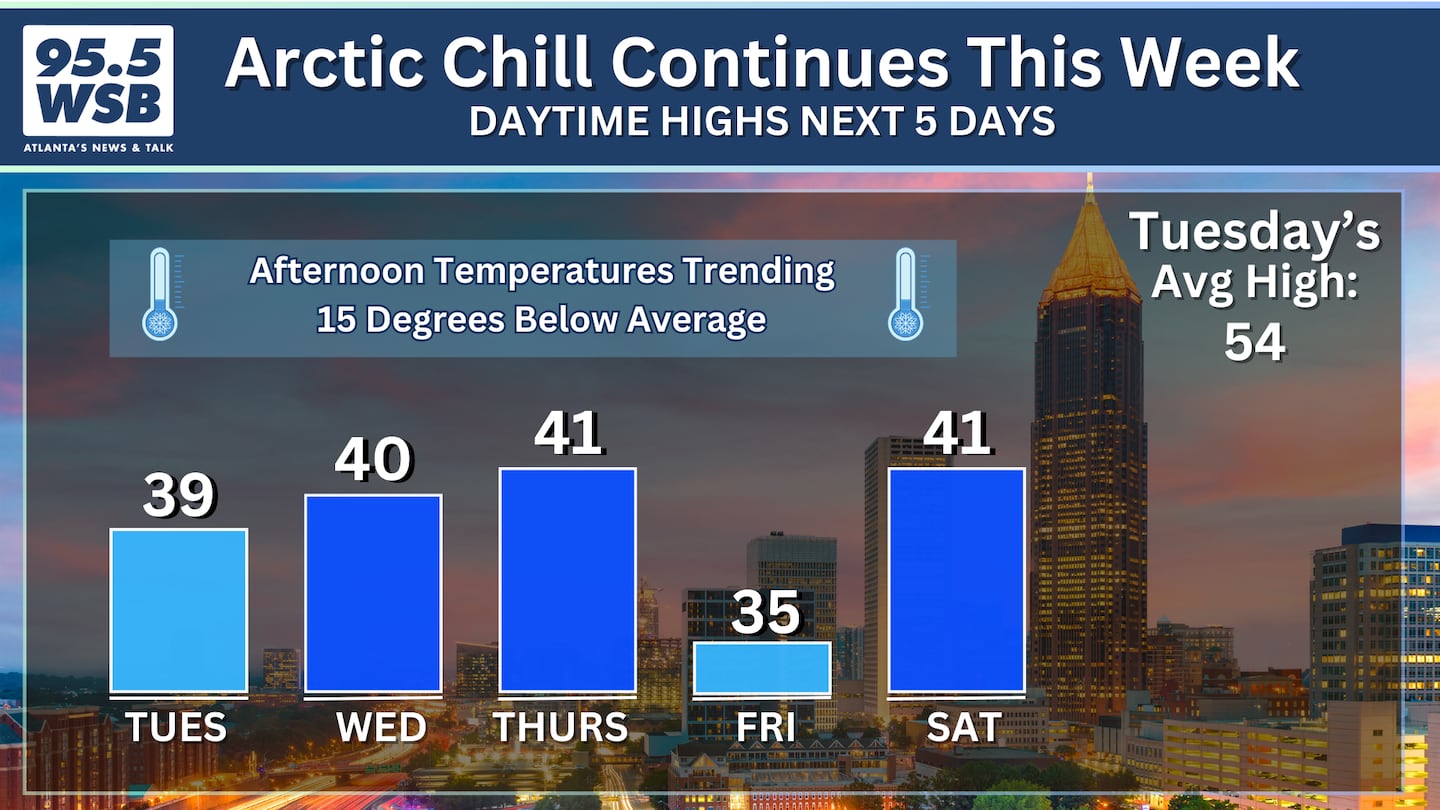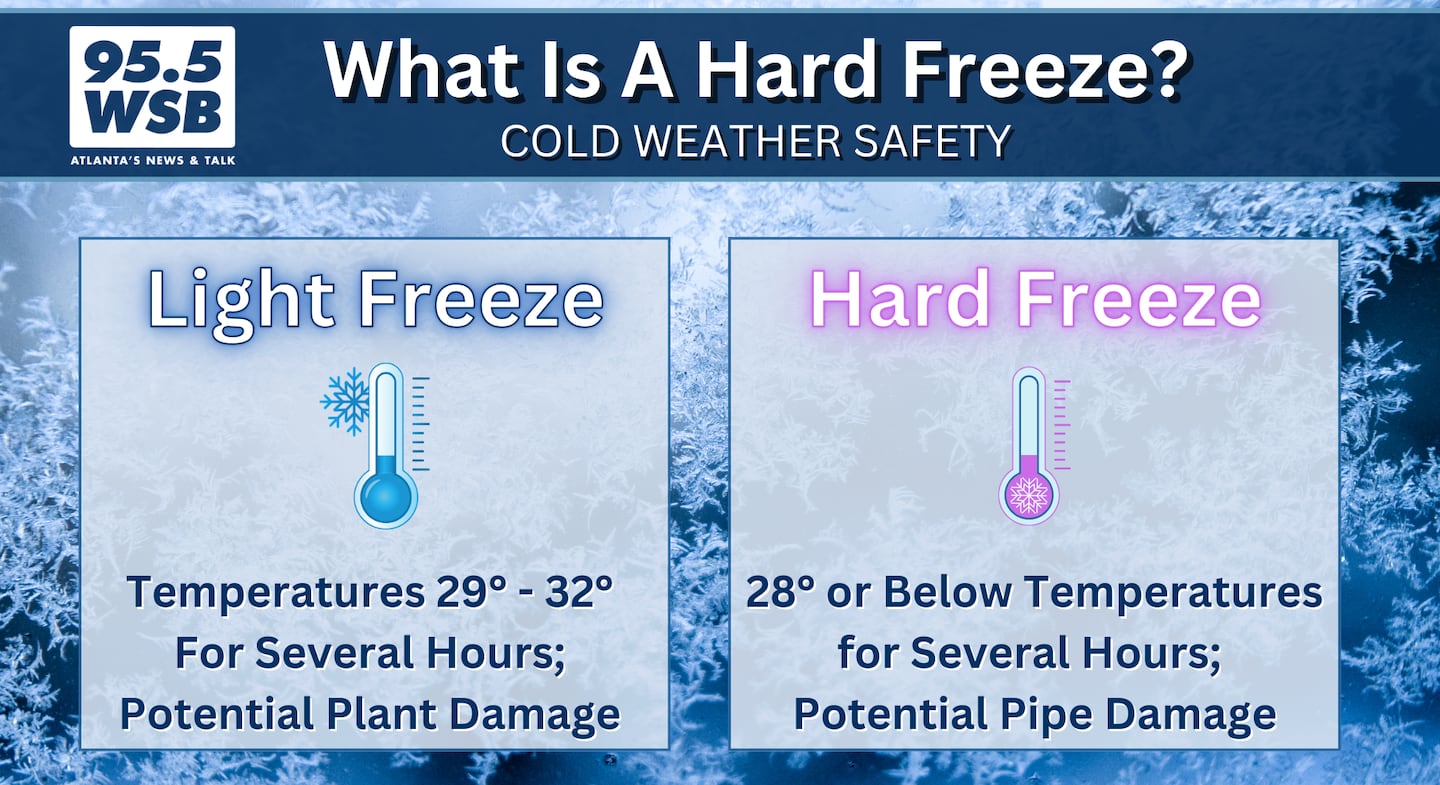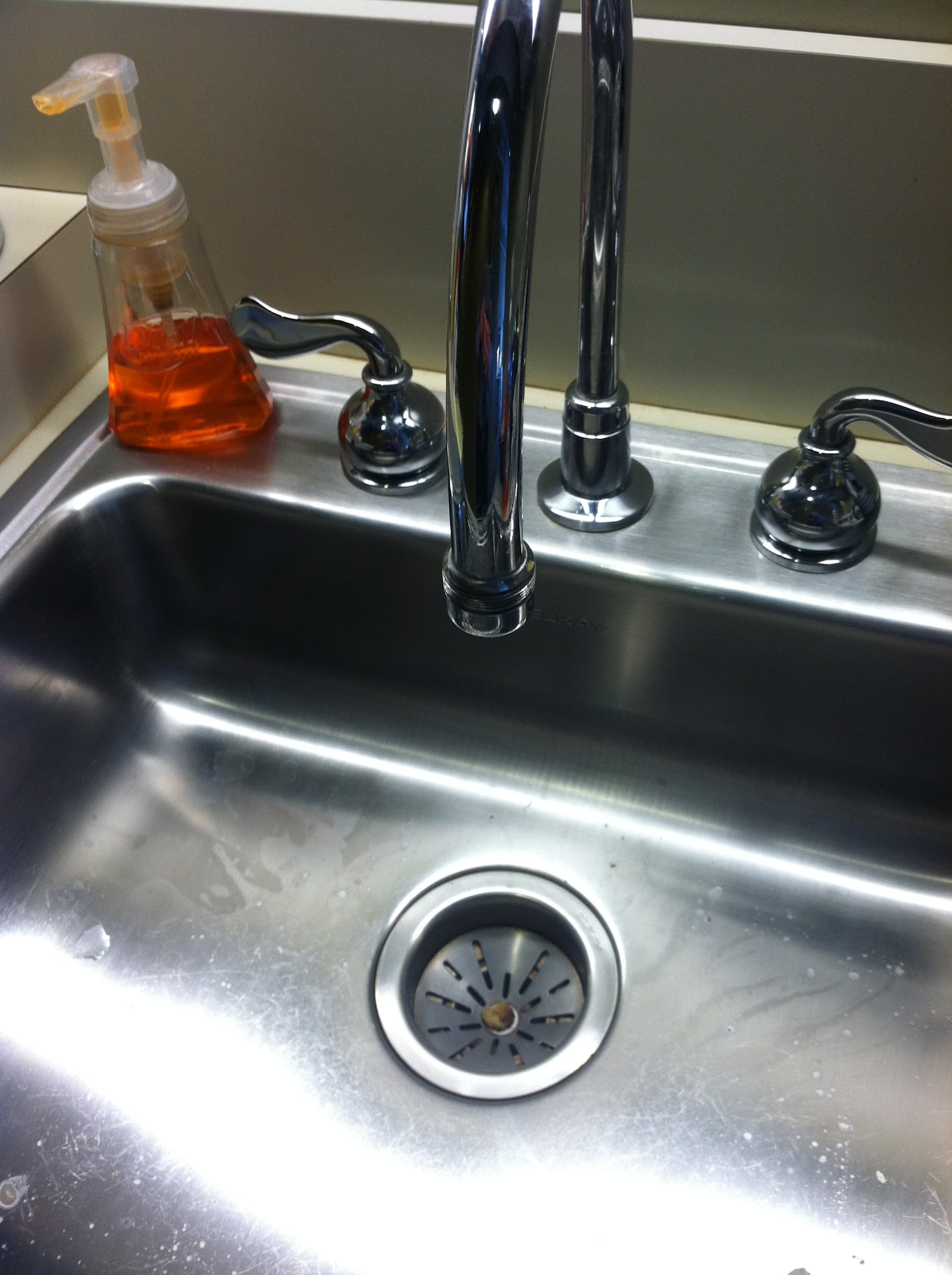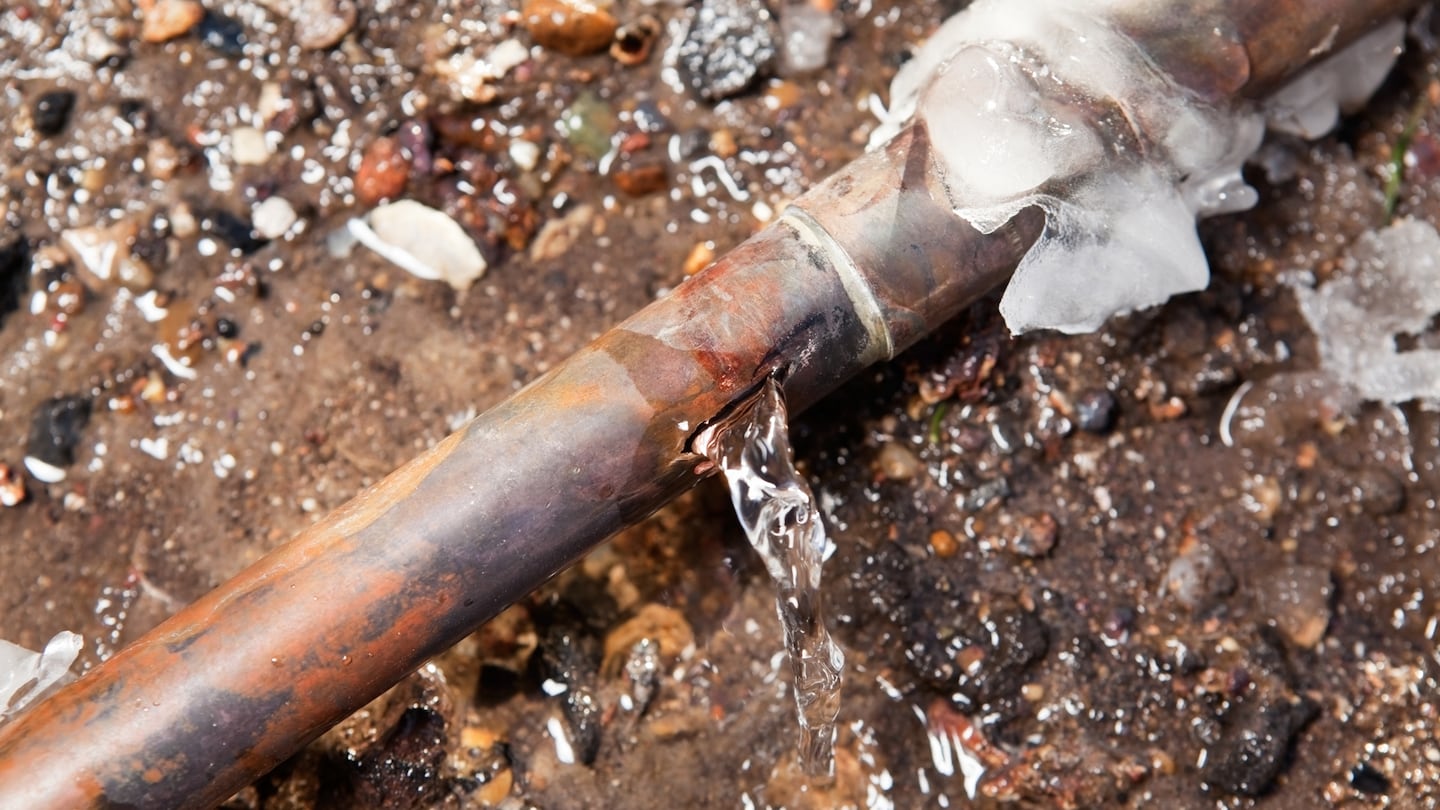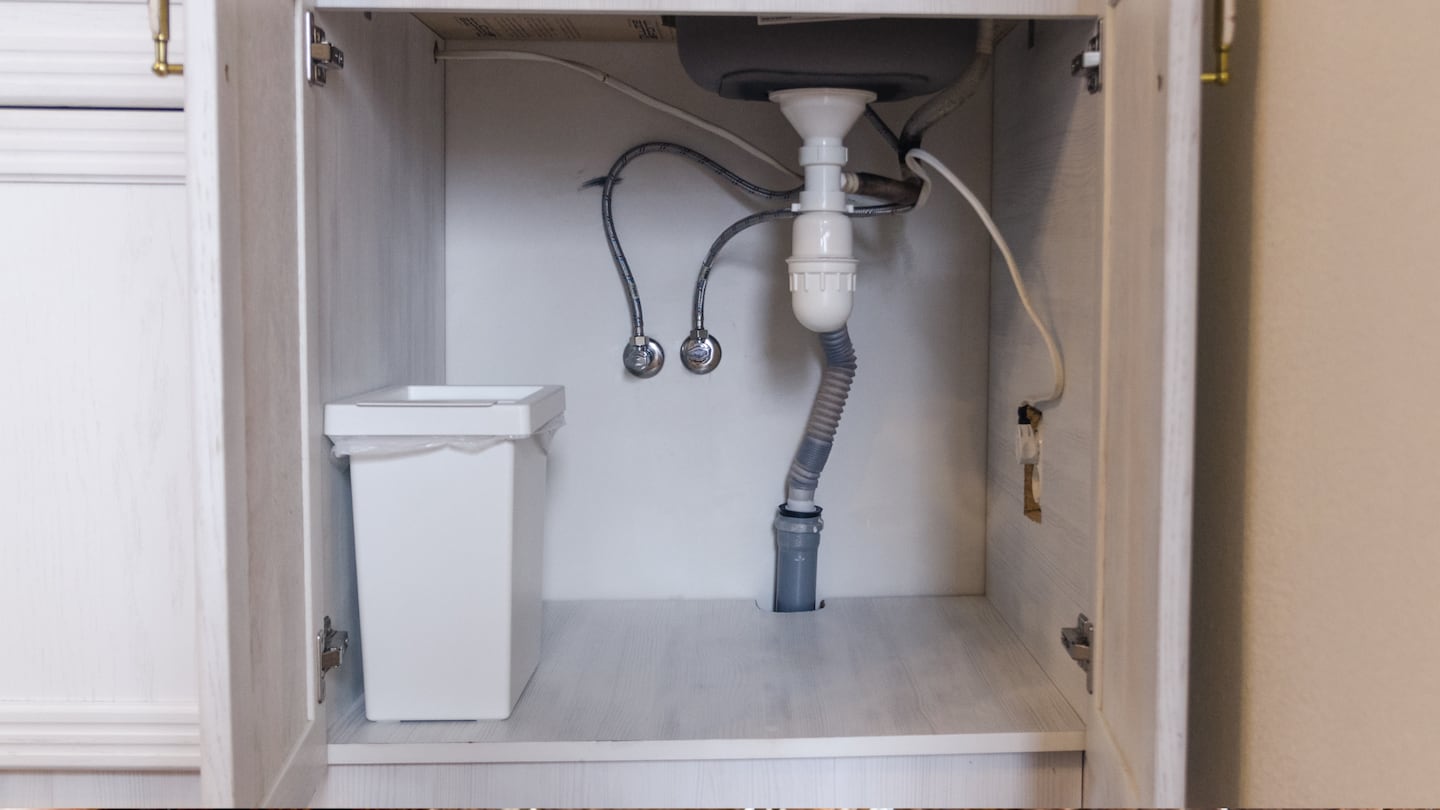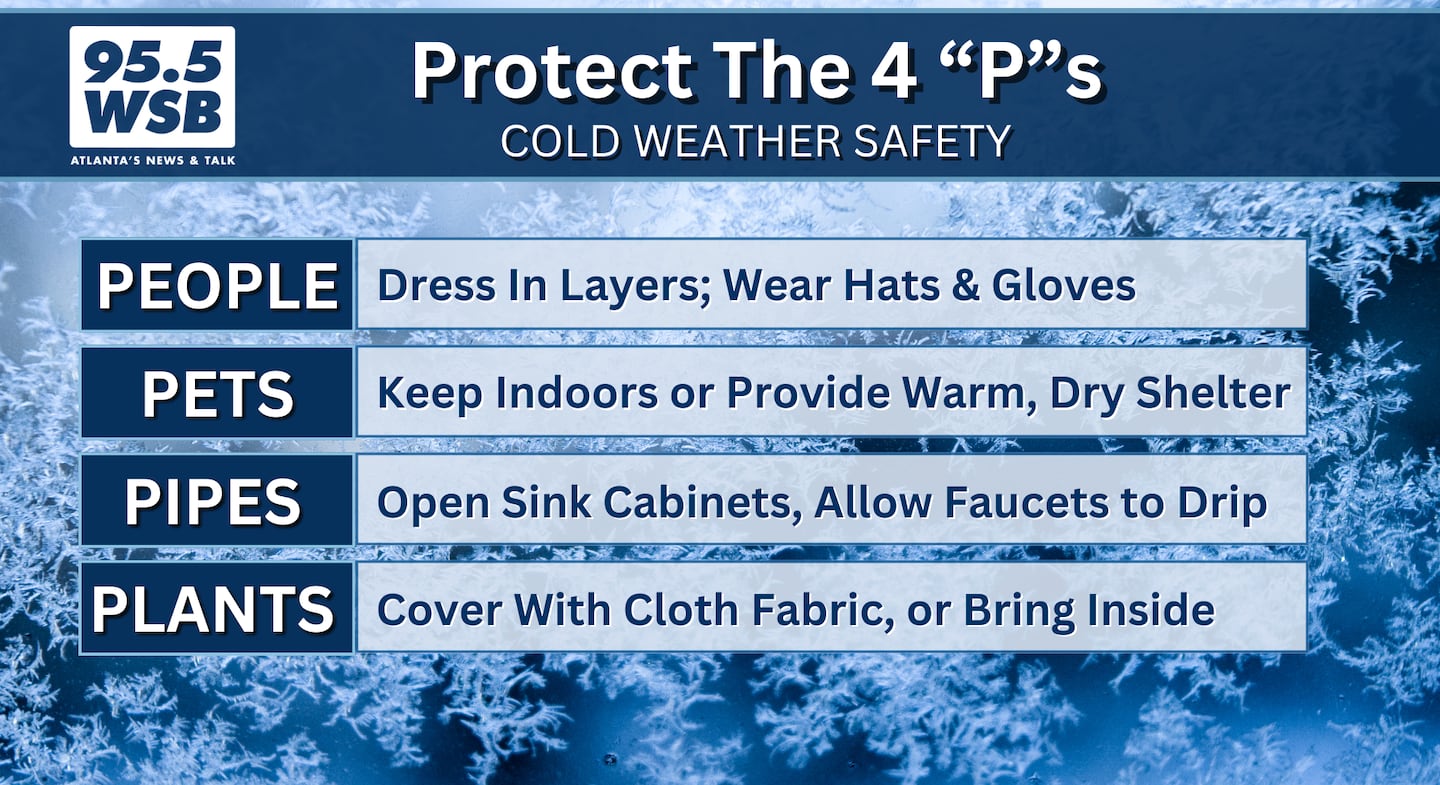The Arctic Air is now in place over Metro Atlanta, and it will stay through the end of the week!
As a result, morning lows will dip 10 to 15 degrees below average, into the low to mid 20s through Friday morning.
Afternoon temperatures will also trend 10 to 15 degrees below average, with daytime highs limited to the upper 30s to low 40s.
What’s the Big Deal About a Hard Freeze?
A hard freeze is defined as temperatures at or below 28 degrees for an hour or more. Hard freeze conditions can damage crops, landscaping, and outdoor plants, but these frigid temperatures can also produce possible damage to your home.
You may often see or hear the advice of dripping your faucets when temperatures dip below freezing this time of year.
I talked with 95.5 WSB Radio Home-Fix-It Show host Dave Baker to find out how a small stream of water may save you thousands of dollars in damage.
“We drip our faucets for a couple of reasons: Running water freezes more slowly than still water. The water that is just sitting in your pipe is going to freeze much faster than if you have a flow.”
“Another reason is because -- as water freezes, it expands. With your water dripping, that means the faucet is open. If the water freezes in your pipe and it starts expanding, and your faucet’s open, it’s got a place to shove all of that water that is still in the pipe outwards.”
“If your faucet is closed and the water freezes, it starts expanding. Now it’s got nowhere to go -- it’s blocked on this side, it’s blocked on that side -- which means your pipe is just going to burst, at some point.”
“If your pipes are exposed to wind or are in the crawlspace, if they are on the outer part of your house, it could be exposed to a little more wind -- that will make you want to drip your faucets sooner.”
“It’s better to drip your faucets than to wake up with broken faucets. It’s a mess.”
“If you’ve ever had frozen pipes in the past, you’re susceptible to having frozen pipes again. I don’t care what you have done or how you have finished that room -- if you’ve had them once, you are likely to have them again.”
“If you wake up in the morning and you turn your water on, and nothing comes out, turn your water back off. Try and trace the pipe back as best you can. If you see it broken, if you see somewhere where it has actually burst with ice on it -- don’t do anything. Call a plumber, but don’t touch it. That ice is all that is keeping from that pipe from releasing water, you want it to stay frozen as long as you can.”
In addition to dripping the faucets, keep the cabinet doors open overnight or during the duration of the freezing temperatures.
“We’re doing this to allow the warm ambient air that is in the house in to reach all the plumbing underneath your faucet and sink, especially if your faucet and sink is on an outside wall. You want all the heat to reach that as much as possible.”
Protect the 4 “P”s
When the forecast calls for hard freeze conditions, mind the 4 “P’s”: Pipes, Pets, People, and Plants.
- Dripping the faucets and opening the cabinets are an easy way to protect your pipes and plumbing.
- Never leave pets outdoors when it gets this cold -- their fur is not enough to protect them, and they could succumb to hypothermia. If pets must stay outside, make sure there is warm and dry shelter available, with water and food that does not freeze over.
- Even in the cold, people do have to work outdoors, including construction workers, utility workers, airport ramp workers... Even kids waiting at the bus stop will need to wear multiple layers as well as gloves and hats to protect from hypothermia. If possible, give outdoor workers extra break time to warm up from the cold.
- Plants: Houseplants have likely already been moved indoors, but hard freeze temperatures can impact crops like peaches, blueberries, etc. Any outdoor plants that are not freeze hardy will need to be covered and protected.
Share Your Temperature Reports With Me!
Facebook: Christina Edwards WSB
Instagram: ChristinaWSBwx
Twitter: @ChristinaWSBwx
TikTok: @ChristinaEdwards955WSB
©2025 Cox Media Group

